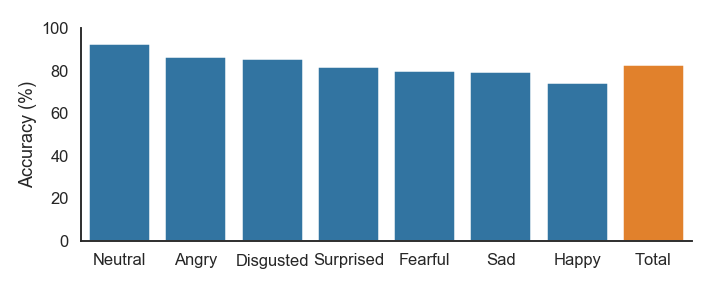alexmuhr / Voice_emotion
Labels
Projects that are alternatives of or similar to Voice emotion
Vocal Emotion Sensing
Intro
Human expression and communication is multi-faceted and complex. For example, a speaker not only communicates through words, but also through cadence, intonation, facial expressions, and body language. It's why we prefer to hold business meetings in person rather than over conference calls, and why conference calls are preferred over emails or texting. The closer we are the more communication bandwidth exists.
Voice recognition software has advanced greatly in recent years. This technology now does an excellent job of recognizing phoenetic sounds and piecing these together to reproduce spoken words and sentences. However, simply translating speech to text does not fully encapsulate a speakers message. Facial expressions and body language aside, text is highly limited in its capacity to capture emotional intent. It's why sarcasm is so difficult to capture on paper.
This github repo contains code used to build, train, and test a convolutional neural network to classify emotion in input audio files.
Data
Data for training and testing this classifier was obtained from three University compiled datasets: RAVDESS, TESS, and SAVEE. In total these datasets provide > 4,000 labeled audio files across 7 common emotional categories (neutral, happy, sad, angry, fearful, disgusted, surprised) spoken by 30 actors.
The RAVDESS audio files are easily available online in a single downloadable zip file.
The TESS files are also easily available but require some web-scraping and a wget
command. The SAVEE files require registration to access, anyone can easily register.
Once registered the files can be easily downloaded via a single wget command.
Methods
A number of preprocessing steps are required before audio files can be classified. Python's Librosa library contains a number of excellent functions for performing these steps. The process is essentially to load audio files into python, remove silent portions, create set length windows of audio, then compute MFCCs for each window. The actual classification is then performed on the windowed MFCCs.
The file visualizing_and_cleaning_data.ipynb contains code used for EDA and noise floor detection.
Training data is generated by taking random windows from each file, for this project I used 0.4s windows. The number of windows taken from each file is determined by the file's length. This training data is then fed into a convolutional neural network.
In order to make predictions on test files a similar process is used. The main difference is that windows are taken from the test file in a sliding fashion, I used a 0.1s step size for my 0.4s windows. Classification is then performed on every window, predictions are aggregated for all the windows, and the final result is determined by choosing the class with the greatest aggregate prediction strength.
The file build_cnn.ipynb contains code used for generating training data, passing the training data to a CNN, then making predictions on a test set of files.
Results
The CNN was able to predict the emotion of the test set files with 83% accuracy.

